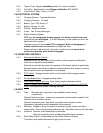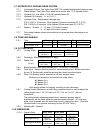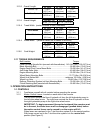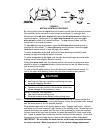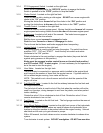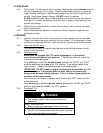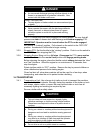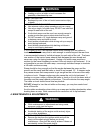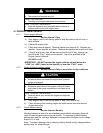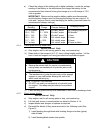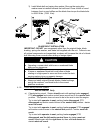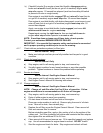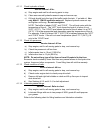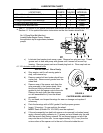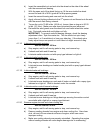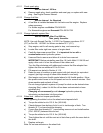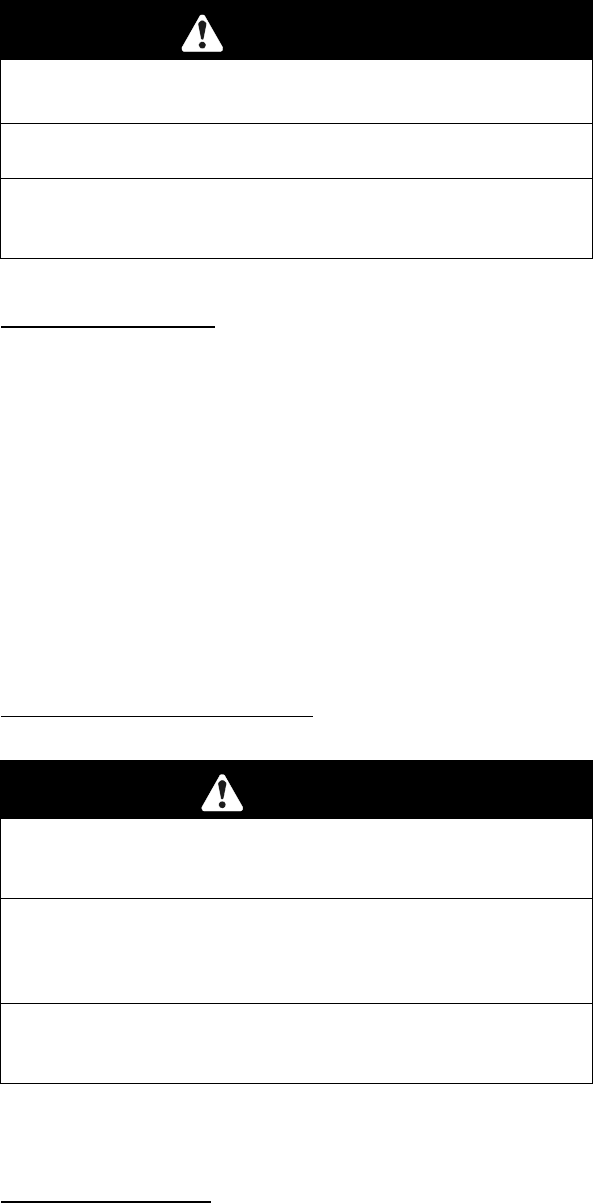
19
WARNING
POTENTIAL HAZARD
♦ The engine can become very hot.
WHAT CAN HAPPEN
♦ Touching a hot engine can cause severe burns.
HOW TO AVOID THE HAZARD
♦ Allow the engine to cool completely before service or
making repairs around the engine area.
4.1 PERIODIC MAINTENANCE
4.1.1 Check engine oil level:
Service Interval: Daily
a) Stop engine, wait for all moving parts to stop and make sure unit is on a
level surface.
b) Check with engine cold.
c) Clean area around dipstick. Remove dipstick and wipe oil off. Reinsert the
dipstick. Screw dipstick into place. Remove the dipstick and read the oil level.
d) If the oil level is low, wipe off the area around the oil fill cap, remove cap,
and fill to the “FULL” mark on the dipstick. Use oil as specified in the
Engine Owner’s Manual.
DO NOT overfill.
IMPORTANT: DO NOT operate the engine with the oil level below the
“LOW” (or “ADD”) mark on the dipstick, or over the “FULL” mark.
4.1.2 Clean engine air cooling system
:
Service Interval: Daily or more often in dry conditions
CAUTION
POTENTIAL HAZARD
♦ Excessive debris can cause the engine and hydraulic
system to overheat.
WHAT CAN HAPPEN
♦ Excessive debris around the engine cooling air intake
and inside of the pump compartment can create a fire
hazard.
HOW TO AVOID THE HAZARD
♦ Clean all debris from around the engine and hydraulic
pumps daily.
a) Stop engine, wait for all moving parts to stop, and remove key.
b) Clean all debris from rotating engine air intake screen and from around
engine shrouding.
4.1.3 Check battery charge
:
Service Interval: Monthly
Allowing batteries to stand for an extended period without recharging them will
result in reduced performance and service life. To preserve optimum battery
performance and life, recharge batteries in storage when the open circuit voltage
drops to 12.4 volts.
Note: To prevent damage due to freezing, battery should be fully charged before
putting away for winter storage.



